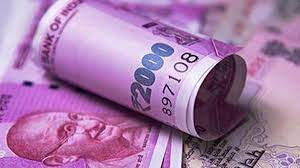In November 2016, the Government of India announced the demonetization of ₹500 and ₹1000 currency notes as a measure to curb black money, counterfeit currency, and promote digital transactions. As a part of this move, the ₹2000 currency note was introduced. In this blog post, we will explore the effects of the ₹2000 currency note demonetization on the Indian economy.

- Curbing Black Money: One of the primary objectives of demonetization was to eradicate black money from the economy. By withdrawing the ₹500 and ₹1000 notes, which were believed to be frequently used for illicit activities, the government aimed to bring unaccounted wealth into the formal financial system. However, the extent to which demonetization achieved this objective remains a topic of debate.
- Impact on Cash-Dependent Sectors: The demonetization move had a significant impact on sectors that heavily relied on cash transactions, such as agriculture, retail, and small businesses. The sudden withdrawal of high-value currency notes disrupted economic activities, leading to a slowdown in these sectors. Cash shortages and the subsequent decrease in consumer spending had adverse effects on businesses and employment.
- Boost to Digital Transactions: To encourage a shift towards digital transactions, the government promoted initiatives such as Unified Payments Interface (UPI), mobile wallets, and online banking. Demonetization acted as a catalyst for the adoption of digital payment methods, as people faced cash shortages and turned to alternative payment modes. This led to a surge in digital transactions and a gradual reduction in cash dependence.
- Disruption to Informal Economy: The informal sector, which largely operates on cash transactions, was significantly affected by demonetization. Small traders, street vendors, and daily wage workers faced difficulties in accepting the ₹2000 note, as it was not easily exchangeable in the initial phase of demonetization. This disruption had short-term economic repercussions, particularly for those who relied on daily cash earnings.
- Impact on Inflation and GDP Growth: Demonetization had a temporary impact on inflation and GDP growth. The reduction in consumer spending and disruptions in supply chains led to a decline in demand, causing a deflationary effect. However, over time, the economy gradually recovered from the initial shock, and the long-term impact on GDP growth was relatively limited.
- Increased Tax Compliance: Demonetization aimed to increase tax compliance by bringing unaccounted wealth into the formal banking system. The implementation of Goods and Services Tax (GST) further strengthened the government’s efforts to expand the tax base. While demonetization did lead to an increase in the number of taxpayers and improved tax collections initially, sustaining this compliance in the long term remains a challenge.
- Counterfeit Currency and Terrorism Financing: By replacing the old currency notes with new ones, demonetization aimed to counter the circulation of counterfeit currency and disrupt channels for financing illegal activities, including terrorism. The introduction of enhanced security features in the new ₹2000 notes was intended to deter counterfeiting and illicit funding.
The demonetization of ₹500 and ₹1000 currency notes and the subsequent introduction of the ₹2000 note had a significant impact on the Indian economy. While the move aimed to tackle black money, promote digital transactions, and address issues of counterfeit currency, its effects were multi-faceted. The short-term disruptions in sectors heavily reliant on cash transactions and the subsequent shift towards digital payments were notable outcomes. However, the long-term impact on black money, tax compliance, and economic growth continues to be a subject of discussion and analysis.
